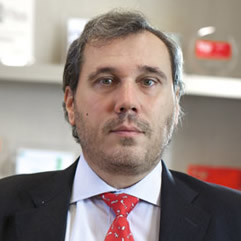Hera takes up the challenge to carry out significant changes by 2030.
For the first time, in its Business Plan presentation Hera also included eight goals to 2030. This way, the Company concretely defined its contribution as a multi-utility operator to:
- The sustainable development goals of the UN 2030 Agenda
- The 2030 binding targets of the EU Clean Energy Package
- The objectives of Energy and Climate Integrated National Plan
For a better understanding of the relevance of this choice and the way it has been developed, we ask some questions to Mr. Massimo Vai, who is Strategy, Regulation and Local Bodies Central Director and Head of Strategic Planning at Hera.
HERA’S EIGHT MAIN SUSTAINABLE GOALS TO 2030
-35%Decrease, compared to 2015, of the Carbon intensity in energy produced
-10%Decrease, compared to 2013, of energy consumed by Hera
+15%Increase in Hera’s reuse of waste waters, compared to 2015
-25%Decrease, compared to 2018, of Hera’s water consumptions
+150%Increase, compared to 2017, of plastics recycled by Aliplast
85%Share of waste to energy and material recovery from waste treated in selection plant
90%Share of employees prepared to work digitally
TOP10Positioning in a significant global index of Diversity & Inclusion (today Refinitiv)
In the Business Plan to 2023, you presented eight targets on sustainability to 2030. How have you integrated those priorities in your typical five-year planning structure?
Over the years, we progressively enriched and refined the setting of our accounting and planning activities. At the basis of our five-year planning process, there has always been the collection of business Key Performance Indicators underlying the Group’s economic objectives – an activity made at Business Unit level for every single fiscal year covered by the Plan.
Progressively, we included those same targets in the Balanced Score Cards of both executives and managers, with the aim to strengthen the likelihood of their achievement.
Over time, we also added new targets, in line with the evolution of the Group’s business strategy. Over the last few years, we addressed an increasing number of goals related to sustainability and measurement of the Group’s contribution to the achievement of the Sustainable Development Goals set by the United Nations. This way, we succeeded in quantifying the shared value that we are committing to generate within the Business Plan horizon. In the last four years, we have always included the shared value data in our Sustainability Report.
This year, we believed that we have achieved a sufficient level of maturity to take another evolutionary step, i.e. to include and state for the first time a set of long-term targets, overcoming the five-year period of the Business Plan and in line with the deadlines set by National and International institutions. As usual, the organisation reacted with great commitment and consciousness, defining ambitious yet feasible trajectories, along which we can reach a series of sustainability objectives.
How did you identify this set of eight sustainability goals to 2030?
We have defined the objectives through a joint work, involving Business Units, Strategy, Regulation and Local Bodies Department as well as the Shared Value and Sustainability Department. Starting from the 2023 goals – the five-year Plan horizon – we prioritised a set of goals in the three areas in which we classify our activities, i.e. Waste, Networks and Energy. We also identified some crosscutting objectives that directly involve the Staff Departments and indirectly bring in the entire organisation.
We defined the value of any single target to 2030 by top-down analysing the actions and the resources needed to achieve it, being aware that the next Business Plans will have to provide such resources, with the aim to ensure consistency and continuity to the path. The long-term nature of goals clearly includes a bit of challenge; this does not mean they do not guarantee a full alignment with the Group’s business trajectory or they do not have a reasonable chance to be achieved.
Among the eight goals presented, what are the ones that you consider more challenging?
It is quite hard to provide a ranking on the challenge degree of all the goals presented. Since it is the first time we do this exercise for such a long-term horizon, we have actually challenged ourselves a lot, going the extra mile. On the other hand, at Hera we have always been cautious in our business projections – we are used to stick to the commitments that we have made. That said, for sure a tricky component can be found in all the objectives whose achievement does not depend exclusively on us, but also on external factors, such as the cultural evolution of the context in which Hera operates.
For instance, such evolution is key to improve performance in waste recovery and recycling, as well as in the reduction of water and energy consumptions.
How will you monitor and communicate the progress on those issues on the next 10-year journey?
This is definitely the least concerning activity from our point of view. We have long consolidated at Group level the collection process of historical KPIs that we map predictively, some of which are used in drafting our Sustainability Report.
What we should add to that process is the evaluation of the trajectory trend of the different indicators. Starting with the last available report, we will pass through the target of the Plan’s last year and then make the new projection to 2030. This will allow us to understand in time whether an acceleration is required on certain actions or, as we hope, we can actually meet and even anticipate the goals achievement. Every year, we will check and possibly align targets during the work to prepare the new Business Plan. Therefore, we will have the chance to keep all our stakeholders posted on a yearly basis on the progress made on our path to 2030.















